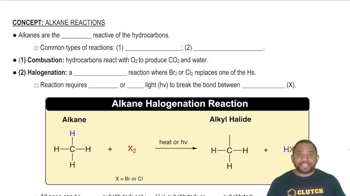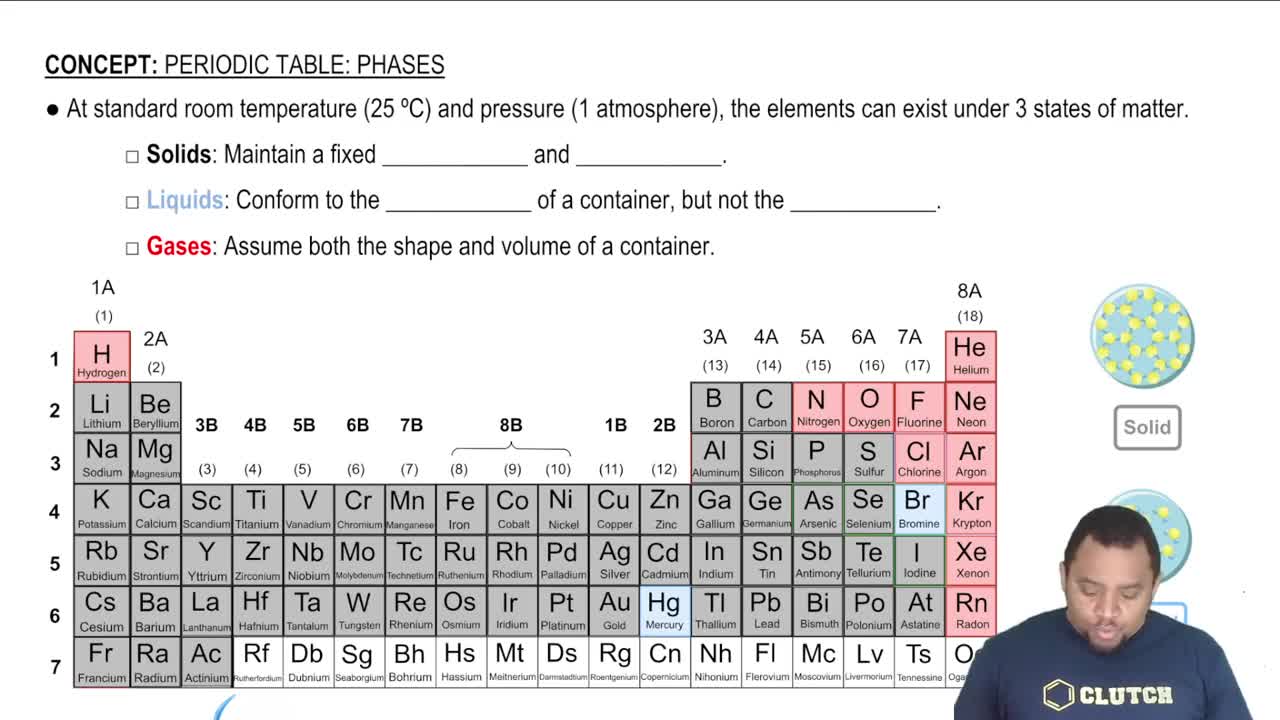Balance the following equations: b. C5H10O2(𝑙)+O2(𝑔)⟶CO2(𝑔)+H2O(𝑔)

Balance the following equations: d, NaN3(𝑠)+HNO2(𝑎𝑞)⟶N2(𝑔)+NO(𝑔)+NaOH(𝑎𝑞)
 Verified step by step guidance
Verified step by step guidance
Verified video answer for a similar problem:
Key Concepts
Balancing Chemical Equations

Types of Chemical Reactions

States of Matter in Reactions

Balance the following equations: b. WCl6(𝑠)+Na2S(𝑠)⟶WS2(𝑠)+NaCl(𝑠)+S(𝑠)
Balance the following equations: c. NaHCO3(𝑠)+H2SO4(𝑎𝑞)⟶CO2(𝑔)+H2O(𝑙)+Na2SO4(𝑎𝑞)
Write balanced chemical equations corresponding to each of the following descriptions: c. Solid zinc metal reacts with sulfuric acid to form hydrogen gas and an aqueous solution of zinc sulfate.
Write balanced chemical equations to correspond to each of the following descriptions: (a) When sulfur trioxide gas reacts with water, a solution of sulfuric acid forms. (b) Boron sulfide, B2S3(s), reacts violently with water to form dissolved boric acid, H3BO3, and hydrogen sulfide gas.
Write balanced chemical equations to correspond to each of the following descriptions: (c) Phosphine, PH3(g), combusts in oxygen gas to form water vapor and solid tetraphosphorus decaoxide.
